Chinese Food Culture 🍚 Discover 八大菜系
Do you know what the ‘eight great cuisines’ are?!
Chinese cuisines have typically been divided into ‘Eight Great Cuisines’ 八大菜系 ba da caixi as a means of simplifying this vast and complex tradition and pinpointing regional characteristics.
Here they are in all their glory…
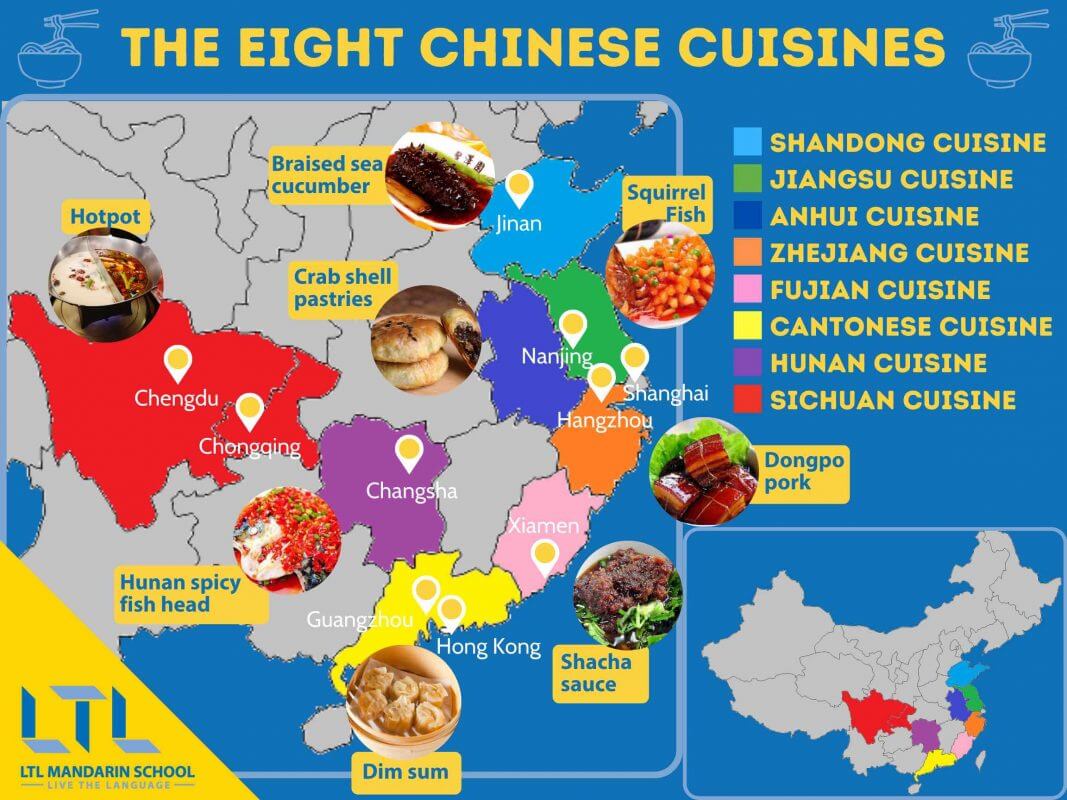
However, as some observers have mentioned, this system of dividing up China’s food tradition is somewhat arbitrary.
Why have some regions been honoured with the status as one of the ‘greats’ while others, arguably just as popular and important, have been snubbed?
In an attempt to undo this injustice, we will first take a look at these ‘Eight Greats’, and what ingredients and flavours make them unique.
We will then delve into some of the other regional cuisines that have been overlooked in this canon but are equally worthy of our attention.
The 8 Great Chinese Cuisines
8 Great Chinese Cuisines | Shandong Cuisine 山东菜
8 Great Chinese Cuisines | Sichuan Cuisine 四川菜
8 Great Chinese Cuisines | Cantonese Cuisine 粤菜
8 Great Chinese Cuisines | Fujian Cuisine 福建菜
8 Great Chinese Cuisines | Anhui Cuisine 安徽菜
8 Great Chinese Cuisines | Zhejiang Cuisine 浙江菜
8 Great Chinese Cuisines | Jiangsu Cuisine 江苏菜
8 Great Chinese Cuisines | Hunan Cuisine 湖南菜
8 Great Chinese Cuisines | Other Noteworthy Cuisines 其他的吗?
8 Great Chinese Cuisines | FAQs
Shandong Cuisine 鲁菜 Lu cai
Shandong cuisine is the regional representative of northeast China.
Its status as one of the main food traditions of China is thanks partly to the Ming and Qing dynasty emperors’ taste for the refined dishes from this region and its deep influence on the cuisines of the neighbouring regions of Beijing, Tianjin, Hebei, and the Northeast.
Shandong province is partially located on a peninsula, so naturally seafood features heavily in local dishes, but proteins such as pork, poultry, and tofu are popular further inland.
Shandong is a major grower of wheat, therefore wheat-based foods such as dumplings, noodles, and wheat gluten are found in abundance here.
DID YOU KNOW || A technique known as 爆炒 baochao – flash frying – is typical in this region. Food is deep fried rapidly at a very high temperature to create a delicate and crispy exterior without making it oily!
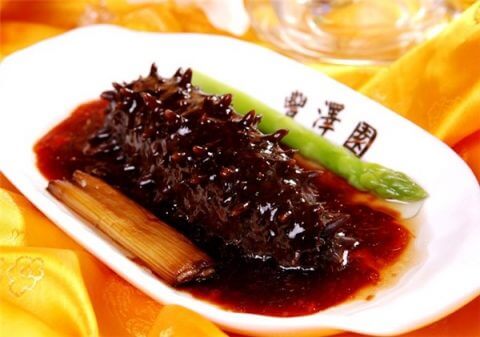
Braising and stir-frying are also typical cooking techniques in this cuisine.
One of the more unusual of ingredients enjoyed in this region is the sea cucumber 海参 haishen, which is traditionally braised with onions and a light and salty gravy.
Typical ingredients: Green onions 葱 cong, fennel 茴香 huixiang
Flavour profile: Light and salty
Sichuan Cuisine 川菜 Chuan cai
Known for its fiery and complex flavours, Sichuan is fast becoming one of the best-recognized cuisines both in China and overseas.
DID YOU KNOW – The capital, Chengdu, was awarded the status of ‘city of gastronomy’ by UNESCO in 2011.
Along with its neighbour and sister in culinary tradition, Chongqing, Sichuanese food has taken the country by storm, evident from the ubiquitous Hot Pot restaurant chains that have become a regular dinner choice for diners across China and their spicy variations.
It’s easy to see why: these dishes are known for their bold flavours that come from the liberal use of chilli, garlic, fermented bean paste, and Sichuan peppercorns.
This addictively spicy and salty fare is the perfect mood-lifter.
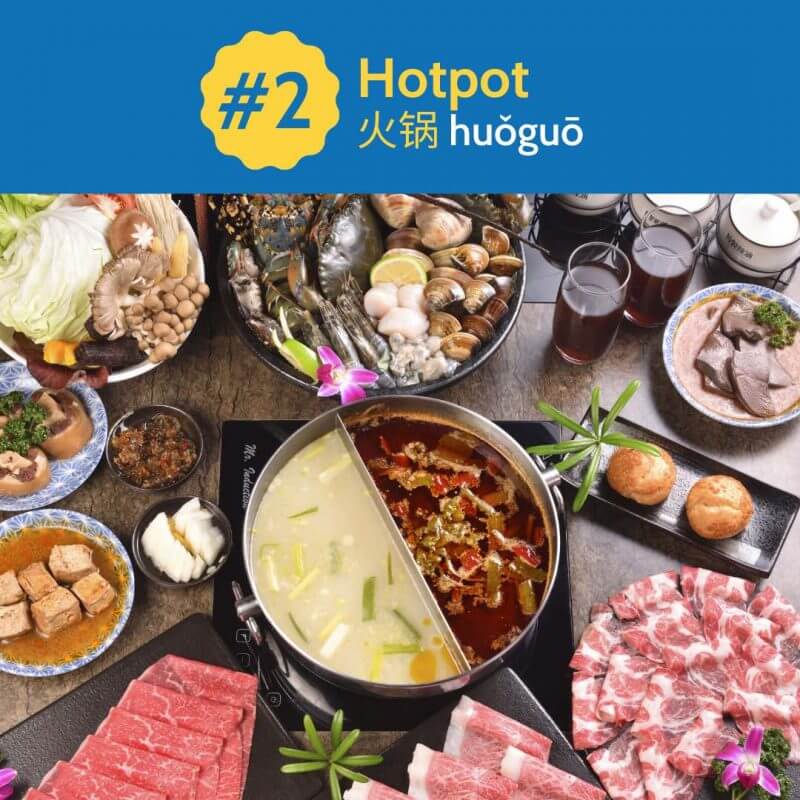
Sichuan is home to the iconic ‘numbing spice’ that comes from the use of Sichuan peppercorn, a cousin of black pepper. Perhaps more than chilli, this is what typifies food from this region.
Pickles and preserves are another staple of Sichuanese cooking, with ingredients such as pickled mustard greens and fermented sauces used regularly.
A typical ingredient originating in this region is fermented bean paste, 豆瓣酱 doubanjiang. This salty and punchy sauce forms the base of many iconic dishes, including the popular twice-cooked pork 回锅肉 huiguorou and Mapo tofu 麻婆豆腐 mapo doufu.
Sichuan and Chongqing are located in the upper reaches of the Yangtze river and are blessed with several different terrains and climates, which has given it a multitude of ingredients to choose from.
In the wet and humid river basin, rice is grown in abundance along with various vegetables. In the northern mountainous plains, cattle are raised, so beef is used more commonly in Sichuan than other parts of China.
One of the more unusual of ingredients is rabbit, which is particularly popular in this region, especially as an on-the-go snack.
Typical ingredients: Chilli 辣椒 lajiao, Sichuan pepper 花椒 huajiao, fermented bean paste 豆瓣酱 doubanjiang
Flavour profile: Numbing spice 麻辣 mala, Fish-scented 鱼香 yuxiang
Cantonese Cuisine 粤菜 Yue cai
Now we come to probably the most famous and widely exported of Chinese cuisines, that of the southern Canton, or 广东 Guangdong region.
This cuisine covers the culinary traditions of southern Guangdong province, Hong Kong, and Macau.
The flavours in this region are typically very subtle and delicate. Soy sauce, rice wine, and rice vinegar are frequently used to flavour dishes, as well as ginger, garlic, green onions, fermented black beans, and five spice powder.
Sweet and salty sauces such as Hoisin, plum sauce, and oyster sauce are commonly used as bases for Cantonese dishes.
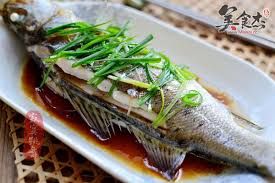
Cantonese cooking techniques have been hugely influential on Chinese cuisines.
Roasting, to create a flavour known as 烧味 shaowei, is typically reserved for meats and poultry, as seen from the traditional dishes of roast Cantonese duck, goose, and Char Siu Pork 叉烧肉 chashao rou.
Situated on the coast of the South China Sea, seafood is eaten regularly and is often steamed 清蒸 qingzheng, to retain the delicate fresh flavour.
And of course, we can’t forget the emperor of Cantonese meals, Dim Sum.
Dim Sum is the quintessential Sunday lunch of the Cantonese family, served at so-called tea restaurants 茶餐厅 cha canting, that are found all over southern Guangzhou and Hong Kong.
A selection of hand-crafted steamed dumplings along with other classics such as steamed pork ribs and chicken feet are served in small bamboo steamers.
Typical ingredients: Hoisin sauce 海鲜酱 haixian jiang, soy sauce 酱油 jiangyou, black beans 豆豉 douchi, five spice 五香粉 wuxiang fen
Flavour profile: Sweet and salty
Fujian Cuisine 闽菜 Min cai
Located on the coast of the south China sea, Fujian is a mountainous province with a rich and highly influential gastronomical tradition.
With many Taiwanese tracing their roots to Fujian, this cuisine has had a deep influence on the food on the island, with both regions food loosely falling under the banner of Hokkien cuisine.
DID YOU KNOW || Hokkien is the term for the people and language native to Fujian and Taiwan.
BONUS || You can even study Taiwanese Hokkien with us at LTL.
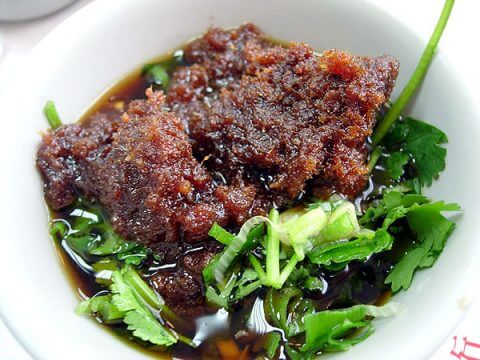
Fujian province is famous for its soups, in particular the more viscous variety, known as 羹 geng, which is a soup thickened with corn starch.
Sauces formed from a base of seafood such as fermented fish sauce 虾油 xiayou, shacha sauce 沙茶 shacha lend an umami flavour to local dishes, which is characteristic of this cuisine.
Shacha sauce is made from chilli, brill fish and dried shrimp. The strong umami flavour makes a delicious base of many Fujianese dishes, but it is also a popular dipping sauce at hot pot restaurants.
TOP TIP || Shacha sauce is not to be confused with satay sauce, a spicy peanut-based sauce popular in Malaysia and Singapore. Confusingly, satay sauce is often translated as 沙茶 shacha in Chinese.
Red yeast rice 红糟 hongzao is another unique ingredient. Rice is fermented with a red yeast and then dried.
It is used as a natural food colouring in many dishes across China today, but is most commonly used to flavour typical Fujianese dishes such as red wine chicken 红糟鸡 hongzao ji.
Typical ingredients: Red fermented yeast 红糟酱, Shacha sauce 沙茶 shacha, fermented fish sauce 虾油 xia you
Flavour profile: Umami 鲜味 xianwei
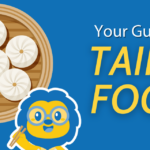
Food in Taipei || Top 6 Foods You Simply Cannot Miss
Food in Taiwan is full of flavour and variety. Using a base of noodles and rice, with strong flavours and lots of meat (mainly beef and pork) and fish.
Anhui Cuisine 徽菜 Hui cai
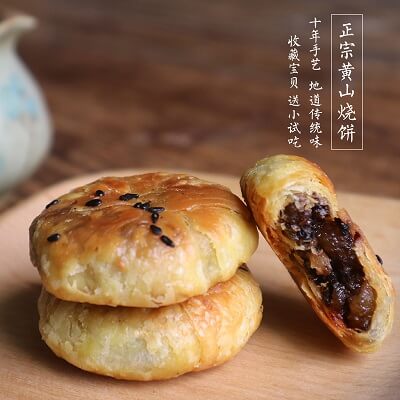
Wild mountains characterize the land-locked southeastern province of Anhui.
This unkempt terrain has had a profound effect on the food culture of the area. The mountains offer an abundance of wild ingredients and locals have traditionally turned to stone frogs, turtles, river fish and even pangolins for sustenance.
Bamboo, mushrooms and wild herbs are used liberally.
According to Chinese legend, Anhui is the ancestral home of tofu.
DID YOU KNOW || The wide availability of tofu has led to the creation of the most exquisite of vegetarian Buddhist cuisine. Plant-based dishes are expertly crafted to look and taste exactly like a meaty centrepiece of roast duck or fish.
Typical ingredients: Bamboo, stone frogs, wild herbs, tofu
Flavour profile: Salty, lightly spicy
Zhejiang Cuisine 浙菜 Zhe cai
We now move on to the more delicate and refined shores of Zhejiang. This culinary tradition broadly covers the province Zhejiang and the northern part of Fujian province.
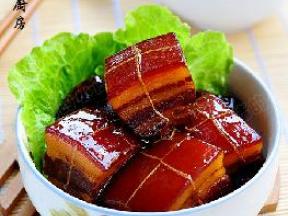
As with anywhere with a coastline, Zhejiang, and in particular the port city of Ningbo, is known for its fresh seafood.
Further inland, in the provincial capital of Hangzhou, meaty dishes such as Dongpo Pork 东坡肉 dongpo rou are the popular choice.
In the hills surrounding Hangzhou, one of the most cherished varieties of Chinese green tea, Longjing 龙井茶 Longjing cha, is cultivated.
With a bustling commercial port in Ningbo and an ancient trade centre in Hangzhou, this region has historically been relatively wealthy.
This in turn has impacted local gastronomy, which is said to be more refined and sophisticated than in other regions.
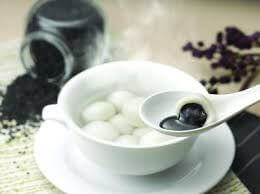
Ningbonese 汤圆 tangyuan originate in this coastal city but are now traditionally eaten all over China during Lantern Festival.
DID YOU KNOW – Zhejiang is also home to the famous Shaoxing rice wine which today is used all over China.
Typical ingredients: rice flour 米粉 mifen,
Flavour profile: Light and salty
Jiangsu Cuisine 苏菜 Sū cài
Jiangsu cuisine is also known as Huaiyang Cuisine 淮扬菜 huaiyang cai, which refers to the combined areas around Huai’an and Yangzhou in southern Jiangsu province.
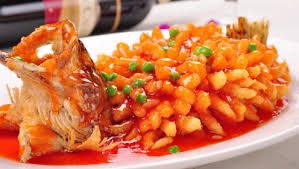
Much like the food in neighbouring Zhejiang province, Jiangsu food is renowned for being very sophisticated. It is particularly famous for the elaborate presentation of dishes.
Techniques such as brining and braising are typical for this region. Sophisticated knife-skills are a hallmark of Jiangsu chefs, who are required to carve foods into intricate shapes.
Besides the seafood deriving from the Yellow Sea to the east, Jiangsu is pocketed with lakes and numerous rivers. Freshwater goods such as water chestnuts, lotus root, water bamboo, and fresh water fish are therefor widely used.
On the lower end of the gastronomical spectrum, Yangzhou Fried Rice is a humble dish of rice fried with ham and egg. It’s popular all over China.
Typical Ingredients: White Fish, various types of sea food, soft textured meats and seasonal vegetables and flavourings
Flavour profile: Light and salty, mildly sweet
Hunan Cuisine 湘菜 Xiang cai
Lying further down the Yangtze river to the east of Sichuan province, Hunanese food has much in common with its bold and spicy neighbour.
The people of the upper reaches of the Yangtze river basin have a penchant for chilli-laden dishes, and Hunan is no exception.
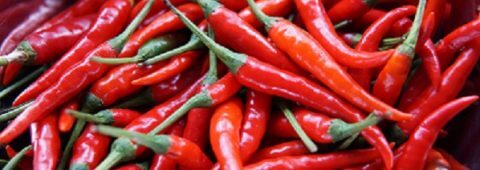
However, there are a few subtle differences that set Hunan apart from Sichuan and Chongqing.
A preference for fresh chillies over the dried chillies used more often (but not exclusively) in Sichuan distinguishes Hunanese dishes.
Vinegar is a widely used ingredient and takes precedence over the numbing spice of Sichuan. Sichuan pepper is used more sparingly in Hunan.
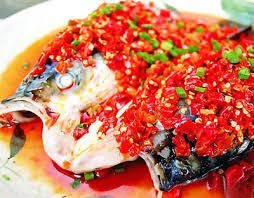
Pickles and preserves are a feature of Hunan cuisine.
Chillies lightly pickled in baijiu rice wine liquor, called 剁辣椒 duo lajiao, literally ‘chopped chillies’, are commonly used. This process mellows the chillies slightly and adds a subtle vinegary flavour.
Meats such as pork are cured or smoked and vegetables are pickled and fermented.
Strong flavours also derive from the liberal use of garlic, ginger, and green onions.
Typical ingredients: Fresh chillies, preserved vegetables, cured and smoked meats
Flavour profile: ‘Pure’ spice 干辣 gan la

6 Top Taipei Breakfast Foods To Start Your Morning Right 🤤
Taipei Breakfast Food Worth Getting Up For (Thank Us Later) Taipei Breakfast Food – Yummy! Breakfast food is a big part of Taipei food culture, and definitely something that is worth getting out of bed for. Even if you’re usually…
Other Noteworthy Chinese Cuisines
Chinese Cuisine | Northeast Cuisine
Chinese Cuisine | Yunnan Cuisine
Chinese Cuisine | Shaanxi Cuisine
Chinese Cuisine | Xinjiang Cuisine
Chinese Cuisine | Overseas
Northeast Cuisine 东北菜 Dongbei cai
North eastern Chinese food is hugely popular all over China.
Restaurants serving classic northeastern dumplings (boiled dumplings that are bigger and meatier than those eaten elsewhere) and carb-heavy dishes like shredded potato 土豆丝 tudousi and 地三鲜 disanxian can be found in any city in China.
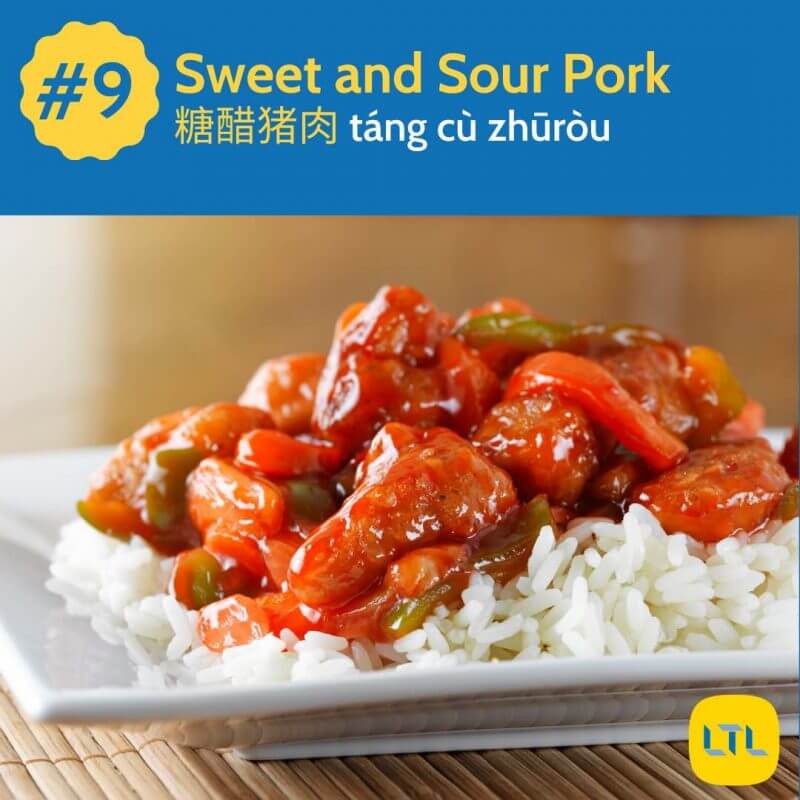
However, with a varied terrain and a mix of cultures and influences, traditional food found in the northeast is perhaps a little more nuanced.
The northeast is the ancestral home to the Manchu ethnic minority and is geographically close to Russia and Mongolia.
Lamb is a popular ingredient thanks to the Mongolian influence in the west, but several rivers running through Heilongjiang province means fish is also a cherished food in this region.
DID YOU KNOW || A quintessential ingredient in north eastern China, fermented cabbage 酸菜 suancai is a mild cousin of the Korean kimchi. Interestingly, this version of fermented cabbage is also very similar to North Korean kimchi, which borders China in the north east.
With a border to Russia in the north, dishes such as Borscht have made it into restaurant menus in cities across the northeast.
The northeastern plain is ideal for growing crops such as wheat and maize. For this reason, foods such as dumplings, steamed corn bread and cornmeal congee are staple foods in this region.
Typical ingredients: Fermented cabbage 酸菜 suancai
Flavour profile: Mildly sweet, salty
Yunnan Cuisine 云南菜 Yunnan cai or 滇菜 Dian cai
The southwestern province of Yunnan is home to numerous ethnic minority groups, each with their own distinct cultures and languages.
Many of these minority groups trace their roots to neighbouring Burma and Thailand. The local cuisine is therefore heavily influenced by south east Asia.
The traditional south east Asian technique of pounding herbs and spices to form a paste to use a base for dishes is employed in Yunnanese cooking.
Herbs such as mint and sawtooth coriander and fruits such as coconut and lime are used
here, uncommon ingredients in the rest of China.
DID YOU KNOW || The Bai people of Yunnan have their own cheesemaking tradition. Their goats milk cheeses varieties such as 乳扇 Rushan and 乳饼 Rubing are firm and don’t melt when heated. They are often served grilled or even deep fried.
Pineapple rice, a creation of the ethnic minority Dai people, is a favourite in Yunnan restaurants across China.
Typical ingredients: Fresh herbs, chilli, fruits
Flavour profile: Spicy and herby
Shaanxi Cuisine 陕西菜 Shanxi cai
As with many regions in northern and western China, Shaanxi food is characterized by its heavy use of wheat products.
Strong flavours derive from the heavy use of dried chilli and spices such as cumin. The region is also famous for its abundance of breads and noodles.

The provincial capital of Xi’an is arguably the epicentre of Shaanxi cuisine. An important stop along the ancient silk road and a former capital of China, influences to the local Xi’an cuisine come from far afield.
Hui Muslims, the largest minority group in the region, are particularly skilled at noodle pulling and are famous for their bread and lamb dishes, such as bread soaked in lamb soup 羊肉泡馍 yangrou paomo.
One of the most famous street food dishes of Xi’an is 凉皮 liangpi.
A hallmark of Chinese ingenuity and resourcefulness, this dish is made up of two key components: chewy and silky ‘noodle skins’ a.k.a. the liangpi and 面筋 mianjin, a wheat gluten that is made as a by-product of the noodle making process.
Want to learn how they are made? Check out this excellent tutorial by Souped Up Recipes!
Typical ingredients: noodles, lamb, cumin, dried chilli
Flavour profile: Dry spices
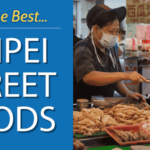
The Ultimate Taipei Street Food To Try: 8 You Can’t Miss
Taiwanese street food is world famous. Its day and night street food markets are a popular attraction both for tourists and locals.
Xinjiang Cuisine 新疆菜 Xinjiang cai
Situated at the crossroads of ‘traditional’ China and central and south Asia, Xinjiang is a culinary melting pot of flavours and ingredients.
Here, local versions of pilaf rice, called 抓饭 zhuo fan, and naan bread is sold alongside Chinese pulled noodles.
DID YOU KNOW || Despite being covered in vast, arid deserts, irrigation from Meltwater has created fertile soil in a climate ideal for fruit orchards. Produce such as peaches, grapes, melons, and pears from Xinjiang are in high demand across China.
Dairy products are widely consumed in this region, with yogurt and even ice cream being local favourites.
Typical ingredients: Cumin 孜然 ziran, mutton 羊肉 yangrou, dried chilli 干辣椒 gan lajiao
Flavour profile: Dry spice and chilli
Overseas Chinese Cuisines
People from mainland China have been travelling and settling abroad for centuries.
Chinese culture, language and culinary tradition has therefore influenced local cuisines in many parts of the world.
In many cases, Chinese enclaves have created unique culinary traditions.
Chinese immigrants in the US have carved out a unique form of American Chinese Cuisine, which has become so popular that a restaurant serving American Chinese food has even opened in Shanghai.
But Chinese influence is not only found in the West.
As mentioned earlier in the article, the people of Fujian have profoundly influenced Taiwanese cooking.
However, people of Hokkien ancestry have travelled even further afield and settled in many regions across south east Asia, such as the Philippines, Indonesia and Malaysia.
Dim sum is hugely popular among the Chinese population of Malaysia.

On the other side of the planet, Peruvian Chinese have combined traditional Cantonese cooking techniques and ingredients with local Peruvian fare to create a unique Cuisine called Chifa.
Typical ingredients include soy sauce, rice and noodles, which are often stir-fried in woks.
In fact, stir-frying using a wok is such a versatile and quick technique that it is used to cook street food in numerous places, including India.

The vast range of varieties in Chinese cuisines could overwhelm even the most hardcore of Chinese foodies. This list is far from exhaustive and if you travel around China you will find an endless amount of creativity and ingenuity in the form of delicious local specialities and spins on national classics.
It would probably be impossible to taste every dish China has to offer, but it is well worth a try!
Don’t forget Western food variations in China! Obviously, the mainland is filled with KFC and McDonalds!
To finish off, we also wanted to nudge you in the direction of some more excellent cuisines.
We introduce you to 6 incredible Vietnamese Street Foods here – 3 from the north and 3 from the south!
Why not check out our favourite Russian dishes that include Borscht and Russia’s very own type of dumpling.
And of course we couldn’t end without a mention to Korea’s incredible cuisine and the best dishes Japan has to offer.
Bet your stomach’s rumbling now?!
Chinese Cuisines || FAQs
Is food the same throughout China?
No food in China is highly regionalised, given the size of the country this is hardly surprising! Although staples can remain the same throughout the country (rice/noodles etc), the cuisine will vary a lot, depending on the region you are in.
For example, Sichuanese cuisine can be highly spicy.
What are China’s 8 famous cuisines?
The 8 Chinese Cuisines are:
Shandong Cuisine 山东菜
Sichuan Cuisine 四川菜
Cantonese Cuisine 粤菜
Fujian Cuisine 福建菜
Anhui Cuisine 安徽菜
Zhejiang Cuisine 浙江菜
Jiangsu Cuisine 江苏菜
Hunan Cuisine 湖南菜
How do you say Food in Chinese?
Food in Chinese is 食物 Shíwù.
What are some of China’s most famous foods?
There are too many to list but some examples include Beijing Peking Duck, Dumplings (of all forms), La Mian (a type of noodles), Chuan’r (kebabs) and hotpot.
How do you say “Great 8 Cuisines” in Chinese?
‘Eight Great Cuisines’ in Chinese is 八大菜系 bādà càixì.
Want more from LTL?
If you wish to hear more from LTL Language School why not join our mailing list.
We give plenty of handy information on learning Chinese, useful apps to learn the language and everything going on at our LTL schools!
Sign up below and become part of our ever growing community!
BONUS | Want to study the local Taiwanese dialect known as Hokkien? We provide Hokkien classes in person and online.

 Hi, my name is Greta. I am from Italy and I work as a student advisor at our Taipei school.
Hi, my name is Greta. I am from Italy and I work as a student advisor at our Taipei school. Hi, my name is Manuel! I am from Spain and I am a Student Advisor at LTL. I’m now based at our Seoul School after living 3 years in Taipei.
Hi, my name is Manuel! I am from Spain and I am a Student Advisor at LTL. I’m now based at our Seoul School after living 3 years in Taipei.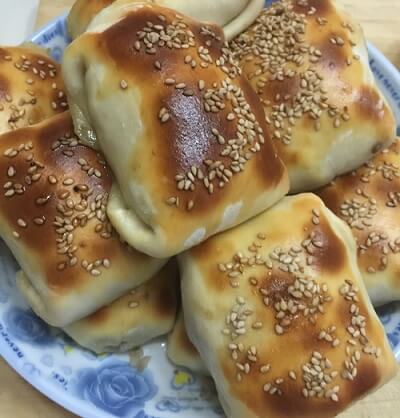

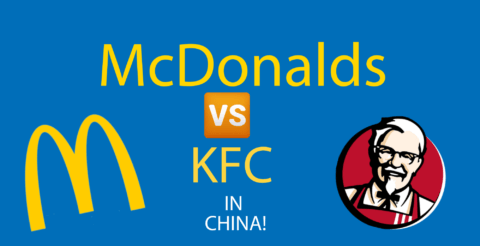




16 comments
Xinjiang food ftw
The spices are soo good!
[…] Chinese Food Culture – The 8 Chinese Cuisines and more! […]
[…] Stepping away from the more traditional Western style brunch the upmarket Chinese restaurant Jing Yaa Tang offers up a sumptuous selection of all you can eat dim sum. […]
[…] a range of different types of food from all over China for you to explore and […]
[…] it than in depths of Beijing’s winter to warm up. Beijing hotpot is distinctive of typical northern Chinese cuisine and it is a lot less spicy than it’s Sichuan counterpart, great news for anyone who just […]
[…] dan noodles (担担面 dàndàn miàn) are a speciality of Sichuan cuisine which of course means, as with many Sichuan dishes, that they’re pretty […]
I travelled through Yunnan and enjoyed some amazing local food at little places. Even with my rubbish Chinese, it was fine
That's excellent Luca. Must've been an amazing trip. Remember, you can always bump your Chinese up with us!
Taiwanese food is sick!!
Glad you are a fan also!
[…] VegeTiger serves vegetarian versions of a range of Chinese cuisines. […]
[…] has to eat, and Chinese cuisine is definitely not something you want to miss out […]
“On the other side of the planet, Peruvian Chinese……” Peru is on the same side of the planet as the US, in America. Chifa has expanded beyond Peru. Google Chifa in New York, Miami, Madrid, Chile, Ecuador, Argentina, Bolivia, etc. There even used to be a Chifa in Hong Kong before the pandemic.
Yes the reference was given from the perspective with China being East and Peru/The America's representing the West 🙂
Thanks for the comment
[…] BONUS || Check out our guide to the 8 great Chinese cuisines here. […]